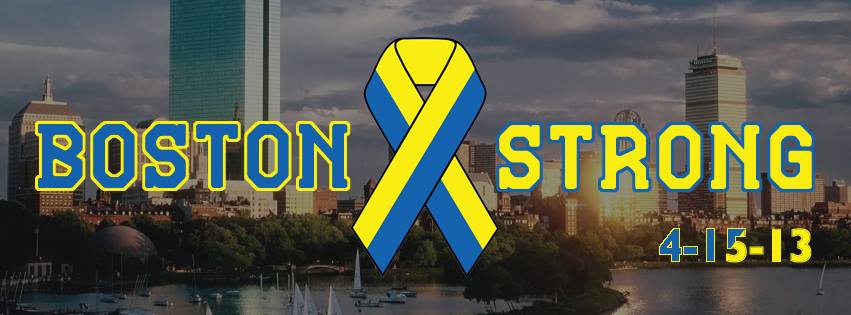On Monday, April 18th, the 126th Boston Marathon will take place with about 30,000 participants and over 500,000 spectators. As runners and fans prepare for another race and celebrate a tradition of over one hundred years, many will commemorate 4 lives lost nine years ago. In 2013, an unprecedented event rocked the Boston event as a terrorist attack took place.
Surprise Attack
It was a regular marathon event for everyone on April 15th, 2013. The first competitors had crossed the finish line and many more were pouring by. It was about five hours in from the start when the first explosion took place half a block from the finish line. Twelve seconds later, the second explosion went off just a couple hundred feet away. A nearby medical tent turned into an emergency medical center as first responders immediately reacted. Three were killed in the blasts while many more were injured, at least 15 losing limbs from the blasts or amputations later due to injuries.
First Responders in Action
The Boston Marathon is teeming with first responders. It’s designed to respond to mass casualties as many runners need medical attention after finishing. This time, things were different. No one knew what was happening, who was responsible for the attack, or who was safe. People called or texted loved ones to check in and many took shelter in stores. First responders on scene for what they expected to be another marathon were suddenly shunted into action. Many attended to the wounded while others took orders to either move people to safety or check to secure the area. Local dispatch centers became command centers to move responders quickly in the confusion.
The Extra Mile
Wheelchairs were grabbed to bring injured people to nearby hospitals as no traffic was able to come through the crowds. One famous image shows a man being pushed in a wheelchair while another man holds something up in pinched fingers. On closer look, one can see it’s his femoral artery. The man in the wheelchair was Jeff Bauman and he ended up losing both legs at the knee. The man who saved his life is Carlos Arrendondo who was there handing out flags, something he’d been doing since he lost his son in Iraq. Disturbing pictures like this show the horror of terrorist attacks which many around here never have the displeasure of witnessing.
Once the marathon was discontinued per state authorities, against the will of the BAA, runners rerouted themselves to the nearest hospitals to donate blood. Beth Israel Deaconess and Mass General hospitals were both overrun with donations to the point that they had to redirect donors to other local hospitals. Thankfully, Boston has plenty. Despite how medical personnel were suddenly overrun, medical and support staff came together to support one another. People stayed on shift or, if possible, came in early.
The Chase
Police and FBI scrambled to find clues leading them to suspects. In this digital age, video footage was everywhere. On April 18th, photos and videos of two suspects were released. Two young men, Tamerlan Tsarnaev (26) and his younger brother Dzhokhar Tsarnaev (19) were identified later. Hours after the release of the photos, the suspects shot and killed Sean Collier of the Massachusetts Institute of Technology Police Department during a carjacking. (Wilmington, Collier’s hometown, still shines blue lights on the common around the time of the marathon.)
The suspects succeeded in carjacking and taking a civilian hostage, forcing him to withdraw $800 from an ATM. While they stopped for gas, the hostage escaped and called 911, leaving his cell phone in the car which allowed police to track the vehicle to Watertown. Just after midnight, a firefight ensued, during which Dic Donohue of the Transit police was shot in a major artery. Donohue’s life was saved thanks to a quick response from Massachusetts State Trooper Chris Dumont. Eventually, authorities were able to capture Tamerlan Tsarnaev while Dzhokhar escaped.
Watertown and Somerville residents received a reverse 911 to shelter-in-place while officers searched door to door. A resident phoned in when he noticed his boat cover was pulled off. He had discovered Dzhokhar Tsarnaev hiding in his backyard and called 911 which led to his capture.
It was later discovered that the two young men were planning to travel to New York’s Times Square to attempt another attack. With the mutual efforts and cooperation of the FBI, Boston, Watertown, and a few other local police departments, the plans never came to fruition. All parties worked together and communicated quickly to gain information, track, chase, and capture the bombers.
Boston Strong
Boston’s response to both the victims and the act of terrorism is summed up in two words: Boston Strong. It became the new slogan for the old city and caught on instantly. Swag with the slogan, along with many other fundraisers, helped fund medical expenses many now faced. Amputees had a long road to recovery, and first responders were recovering from the shock and mental trauma of the event whether they carried a victim, were injured themselves, responded to secure the safety of the public, or dealt with one of the deaths on scene. The event led to 281 injuries, but with the rapid response from the public and first responders of Boston, people came together to support one another and strengthen the community. That’s not something terrorists want to hear.
Recouping and getting back to the marathon tradition couldn’t be helped. Boston refused to be subject to victim mentality. The city came back strong, remembering those who died and standing alongside those who suffered (and still suffer.) Even the COVID pandemic couldn’t keep the marathon down as the date got moved and a virtual marathon was added for people who wanted to run on their own turf and avoid any crowds. As the 2022 marathon comes upon us, the city is as ready as ever to remain Boston Strong.
